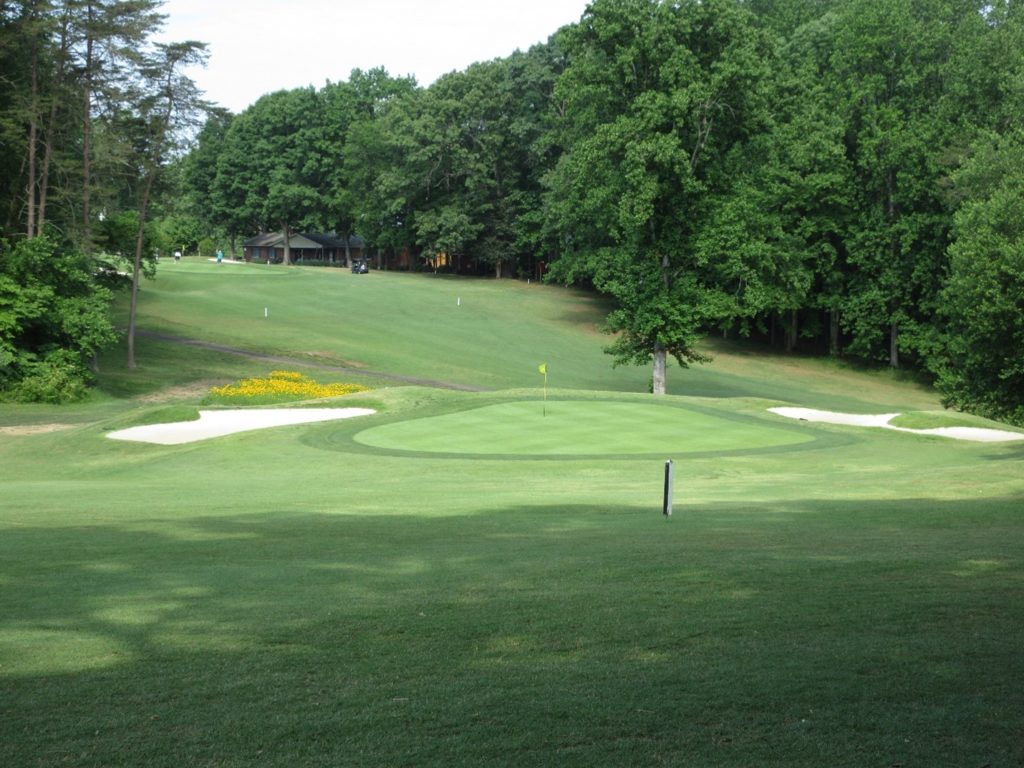Lake of the Woods Golf Club achieves certification as an Audubon Cooperative Sanctuary for Golf
Near the rolling hills and famed Civil War battlefields of Orange County, Virginia lies Lake of the Woods Golf Club, an 18-hole golf course. This semi-private club set within Lake of the Woods community stretches across 151 acres of the 2,600-acre development. Since the club’s inception in 1967, Lake of the Woods has continued fostering environmental sustainability efforts, including achieving certification as an Audubon Cooperative Sanctuary for Golf (ACSP-G) this year as well as participating Audubon International’s Monarchs in the Rough Program.
Audubon International, the world leader in environmental certifications for golf courses, offers the Audubon Cooperative Sanctuary Program for Golf which educates golf course managers on environmentally sound management techniques across 6 focus areas: Site Assessment & Environmental Planning, Wildlife Habitat Management, Water Conservation, Water Quality, Chemical Use Reduction and Safety, Outreach and Education. By becoming certified, courses receive 3rd party verification of their sustainability efforts; a win-win for the course and environment alike.
Lake of the Woods Golf Club began the certification process in 2021 and through the dedicated efforts of Superintendent, Mike Kuhn and Tyler Minamyer, Regional Manager of IGM, the course’s management company. As part of the certification process, courses submit documentation demonstrating their efforts in sustainable management and undergo a site visit by Audubon International staff to verify their efforts. Below are several examples of notable environmental initiatives that Lake of the Woods continues implementing.
Outreach and Education:
Outreach and Education initiatives are a critical and necessary component of ACSP for Golf Certification; focusing on spreading the word about sustainable successes on your course to valued patrons and your surrounding community. Lake of the Woods continues accomplishing this goal in multiples ways including:
- Digital Information Board – highlighting their mission and demonstrating their intent to…
- Balance the demands of golf with their responsibility to the natural environment
- Safeguard the quality of the quality of the environment and responsibly care for the land, water, wildlife, and natural resources upon which our course is sustained
- Implement management practices and projects to achieve the purposes and goals written in their Environmental Plan
- Greens Committee – where shareholders and the agronomy team share their opinions and/or concerns while also encouraging additional shareholders to become involved in initiatives.
Chemical Use Reduction & Safety:
A focus area that’s becoming increasingly important is Chemical Use Reduction and Safety. Lake Woods Golf Club continues reducing their inputs in the following ways:
- Reducing fertilizer use by 1.5 tons in 2021
- Utilizing 95% organic and/or natural fertilizers
- Maintaining safe storage and safe application of inputs
“Through diligent efforts to improve the overall health of the turf by prudent pesticide usage, we have had great success. A better understanding of the influences that impact plant health and sustainability has had a very positive impact on the course’s maintenance operation, both economically and environmentally.” – Mike Kuhn, Golf Course Superintendent, Lake of the Woods Golf Club.
Conclusion
Lake of the Woods Golf Club is a unique property where golfers and history buffs alike can experience a sustainable operation rich in history. In a time where limiting your resource use is of utmost importance, learning how to expand on sustainable resource management is crucial. To learn more about how your local golf course, community or resort can gain recognition for your environmental efforts and learn how to expand your initiatives visit www.auduboninternational.org.
Audubon International, an environmentally focused non-profit organization, offers members numerous certifications and conservation initiatives to protect the areas where we live, work, and play. Their certifications are designed to increase environmental awareness, encourage sustainable environmental efforts, and educate both their members and their communities.





